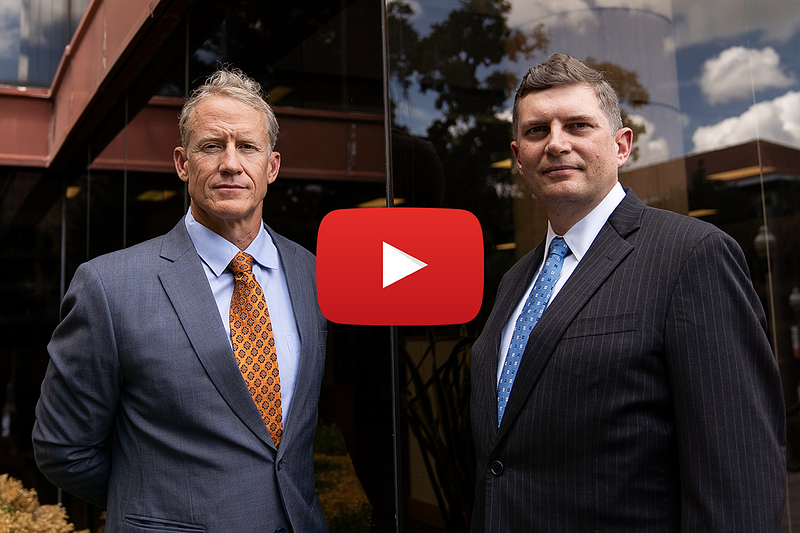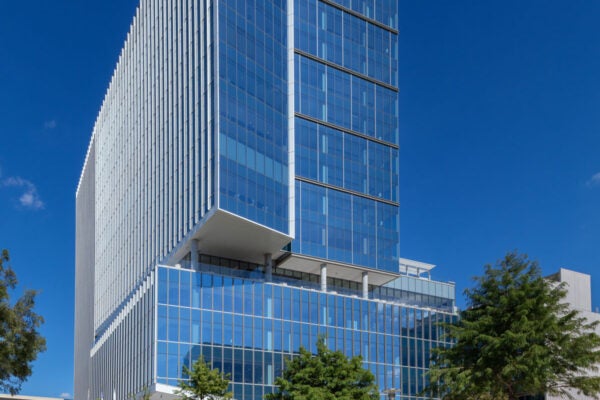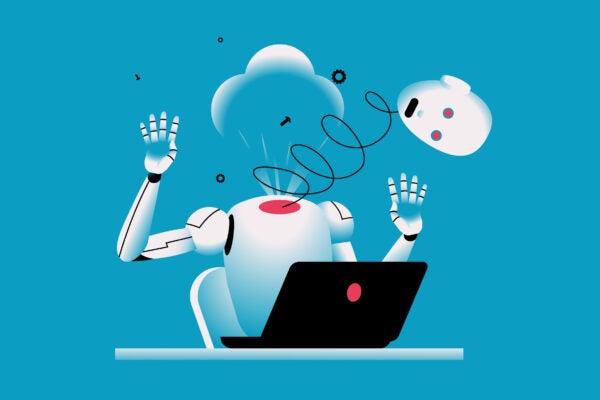Uncovering COVID Loan Cons
How McCombs professors exposed online lenders for facilitating $64 billion in taxpayer rip-offs

As John Griffin was casually opening his work email on a Saturday morning in August 2021, he found a threatening letter from a Fintech lawyer. The lawyer had sent it directly to President Jay Hartzell at UT Austin, with a cc to Griffin. He sensed a fight ahead.
The Texas McCombs finance professor, along with associate finance professor Samuel Kruger, was preparing to release a study of potential fraud in the Paycheck Protection Program, a government program that lent money to businesses during the COVID pandemic.
The study focused on Fintech — short for financial technology — a group of lenders who operated mostly online. They competed with traditional banks by touting faster approvals and more flexible credit standards.
Perhaps too flexible, the study suggested. Fintech loans were three times as likely as bank loans to show red flags of possible fraud: like businesses that didn’t register with their states until after the PPP was launched.
A couple of Fintech lenders had gotten word of the study from reporters planning to break the story. Now, these Fintechs were insisting that UT Austin officials halt the public release of the study.
The letter attacked the researchers’ data and methods, warning the university of “reputational damage” and “large scale repercussions.”
Says Griffin, looking back on that weekend, “I’ve never been one to back down from a controversy.” He and Kruger were prepared to refute the lenders and put out their research. They looked to the university to back them up.
Trust and Finance
For both professors, financial fraud is not just an academic interest. It has the moral dimensions of a crusade.
“Our financial system revolves around its users having a lot of trust,” says Kruger. “Fraud has the potential to cause big breakdowns in that trust.”
Griffin, who has dedicated most of his 26-year research career to the study of fraud, attributes the interest to his religious beliefs. “I wanted to see more connection between my faith and my work,” he says.
He cites a favorite verse from Ephesians: “Take no part in the unfruitful works of darkness, but instead expose them.”
In earlier research, Griffin exposed fraud in areas as diverse as mortgage-backed securities and cryptocurrencies.
The researchers’ antennae went up when they read about the PPP.
Incentives for Fraud
Starting in April 2020, the PPP offered small businesses up to $10 million in forgivable loans for keeping workers on their payrolls. Its goal was to inject money into the economy as quickly as possible. But its structure, the professors feared, was an invitation to con artists.
The Small Business Administration used 4,800 lenders to take applications and disburse funds. Lenders had strong incentives to make loans. They collected up to 5% of a loan’s amount as a processing fee — with flat fees that were proportionally even larger for small loans — adding up to a total of $38 billion.
They had less incentive to screen out bogus borrowers. If a loan went bad, Uncle Sam took the loss. Says Kruger, “You shouldn’t have a middleman who doesn’t have any exposure to whether fraud is being committed.”
How much fraud was occurring? Kruger and Griffin used techniques from forensic finance, a field that analyzes sets of big data for fingerprints of financial foul play.
They cross-checked public SBA data on individual loans against other public databases for signs of suspicious activity, such as multiple loans to the same residential address.
Out of 14 months’ worth of loans, they found that 12% showed at least one indicator of potential misreporting, totaling $64 billion. Among Fintech lenders, the rate was 23%.
Going Public
If they hoped to prevent further fraud, the professors couldn’t wait years to publish their research in a peer-reviewed journal. They planned to follow an academic practice that is becoming more and more common: publishing preliminary findings online as a working paper.
“The activity was still going on,” Griffin says. “We wanted to people be to be aware of it, to try to reduce the amount of fraud, and to encourage law enforcement to go after it.”
In the days just before online publication, the researchers approached the McCombs’ communications team, which offered the paper to a few reporters ahead of its official release date, at media outlets including USA Today and the Washington Post. In return, the reporters wouldn’t publish their stories until the embargo lifted at 5 a.m. on Tuesday, Aug. 17.
In the interim, the reporters did their jobs, contacting Fintech lenders to get their sides of the story, and providing those who asked with a copy of the paper. Two of those lenders had their attorneys send UT officials the threatening letters that Griffin read that Saturday morning.
Over the weekend, while UT lawyers looked over the lenders’ objections, Griffin did as well.
The lenders charged that his data was out of date, because it didn’t include loans they had canceled in the past two months. Griffin immediately addressed their concerns, removed recently canceled loans from the data, and reran his numbers. This changed his findings by less than 1 percentage point. His overall result was still overwhelmingly clear.
“We have worked carefully on this paper and stand behind it,” he wrote to UT officials. “Lawyers from shady companies who have committed massive fraud are trying to interfere with academic freedom with bogus issues.”
By Monday, university lawyers agreed. The researchers were given the green light to publish their findings.
Having an Impact
The research received immediate and massive media attention: at least 448 mentions in print, radio, TV, and online. Some of the coverage tracked down details of specific loans, like $38,674 to two orange groves in Minnesota.
Some swindlers were found to have uploaded headshots of Barbie and Ken dolls as ID pictures for fake businesses. A Florida borrower was charged by prosecutors with using a $7.2 million loan to buy a 12,579-square-foot mansion and three luxury cars.
Most gratifying to the researchers, however, was catching the attention of the U.S. House Subcommittee on the Coronavirus Crisis.
“They complemented our big data by going at this with subpoena powers,” Kruger says. “They could get internal communications and emails and messaging and show that the lenders knew that this was going on.”
The committee’s final report, last December, confirmed the professors’ conclusions. It wrote, “Many fintechs…took billions in fees from taxpayers while becoming easy targets for those who sought to defraud the PPP.”
Final vindication came from the SBA itself. In June 2023, its Inspector General estimated over $200 billion in fraudulent loans from the PPP and a companion program.
Both professors are disappointed in one aspect of the issue: that most fraudsters got away with it. To date, the SBA reports, it’s gotten only $28 billion back.
Nonetheless, they feel they’ve had a positive impact. “There wasn’t much understanding of what lenders were facilitating this and where the gaps in the system might have been,” Kruger says. “I think that understanding has shifted a lot over the last year and a half, and I’m proud of the role we played in that.”
Adds Griffin, “That’s the purpose of academic freedom, to be able to call out wrongdoing. I found it disturbing when the wrongdoers tried to stop the release of important information. I appreciate the university for standing behind us and for valuing academic freedom.”
Story by Steve Brooks
About this Post
Share:


